Classic Round Trip Bulgaria
Explore the beauty of Bulgaria
Price: 625 EUR per person, sharing twin/double room /min 20 Persons/ Price includes: 7 overnights HB ( breakfast and dinner) in 4* Hotels, transport, English speaking guide throughout the trip, Entrance fees Single supplement: 115 EUR Please note that the quoted rates are not valid during the Spring and Autumn Fair in Plovdiv and during the Rose Festival in Kazanlak Itinerary: Sofia Veliko-Tarnovo Plovdiv Sandanski Sofia
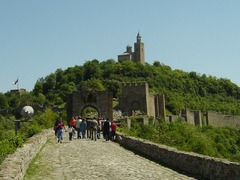 8 day Classic Round Trip Bulgaria- the most famous and interesting places in Bulgaria for only 625 EUR, 7 overnights HB ( breakfast and dinner) in 4* hotels, transport, English speaking guide throughout the trip, Entrance fees.
8 day Classic Round Trip Bulgaria- the most famous and interesting places in Bulgaria for only 625 EUR, 7 overnights HB ( breakfast and dinner) in 4* hotels, transport, English speaking guide throughout the trip, Entrance fees.
Day 1 Arrival at Sofia Airport
Transfer to the hotel. Dinner and overnight in Sofia.
Day 2 Sofia Veliko Tarnovo
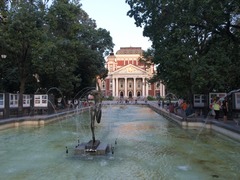 Breakfast. Sightseeing tour of Sofia: St. Alexander Nevski Cathedral - is one of the most significant monuments of culture in Sofia. It was built between 1882 and 1912, in honour of the Russian king Alexander II, called Tsar Osvoboditel (The King Liberator), in Byzantine style, typical for Russia in the middle of the XIX th century. The cathedral of St. Alexander Nevski is one of the symbols of Sofia. It is the largest church-monument on the Balkan peninsula.
Breakfast. Sightseeing tour of Sofia: St. Alexander Nevski Cathedral - is one of the most significant monuments of culture in Sofia. It was built between 1882 and 1912, in honour of the Russian king Alexander II, called Tsar Osvoboditel (The King Liberator), in Byzantine style, typical for Russia in the middle of the XIX th century. The cathedral of St. Alexander Nevski is one of the symbols of Sofia. It is the largest church-monument on the Balkan peninsula.
- The Crypt In the crypt of the cathedral, to the left of the main entrance is located the Icon Museum. Here, over 300 exhibits trace the development of Bulgarian icon-painting from the late ninth century up to the end of the nineteenth century. All eras of Bulgarian icon painting are represented.
- St. Sofia church It is a recently restored Byzantine church. According to scholars St. Sofia church is now one of the most valuable pieces of early Christian architecture in the Balkans. The present building is a cross basilica with three altars. According to popular lore, St Sophia's miraculous powers protected the lovely building over the centuries, warding off human invasions and natural disasters to keep the church as an instance of the elegant, austere and symmetrical architecture of the age.
- Rotunda of St. George The rotunda is under the protection of UNESCO. It was built when Sofia was under the name of Serdica. It was then destroyed by the Huns, rebuilt and turned into a mosque by the Ottomans. According to the historians and archaeologists the discovered frescoes date to the middle of 10 th century. To the east lie excavated foundations of the Roman settlement of Serdica. Nowadays the church is a museum.
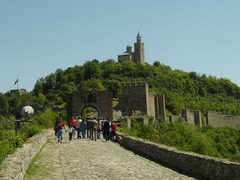 In the afternoon departure for Veliko Tarnovo(the old capital of Bulgaria). Dinner and overnight in Veliko Tarnovo.
In the afternoon departure for Veliko Tarnovo(the old capital of Bulgaria). Dinner and overnight in Veliko Tarnovo.
Day 3 Veliko Tarnovo Arbanassi
Breakfast in the hotel. Sightseeing ot Veliko Tarnovo. The town is regally situated along the historical hills of Tsarevets, Trapezitza, and Sveta Gora, on the two banks of the Iantra river. Veliko Tarnovo is a town with rich and glorious historical past. The Tsarevets Elevation in the eastern part of the town is proclaimed an archeological reserve. There the so called Baldwin Tower, the entrance door, and part of the fortified wall are preserved, as well as the palace of Bulgarian kings and the Bulgarian patriarchy of the Second Bulgarian kingdom (12 14 century) are restored.
In the afternoon visit of the village of Arbanassi . It is one of the most picturesque old settlements in Bulgaria. It is situated in the rocky plateau of the same name, 4 km northeast of the town of Veliko Tarnovo. With its monumental National Revival architecture (16 17 c.) and marvelous nature Arbanassi attracts thousands of Bulgarian and foreign tourists.The village of Arbanassi is proclaimed an architectural reserve and is included in the UNESCOs world heritage list of valuable cultural sites. Dinner and overnight in Veliko Tarnovo.
Day 4 Veliko Tarnovo Kazanlak Plovdiv
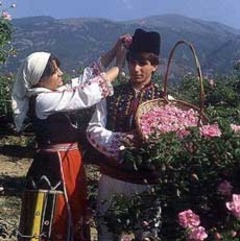 Leaving for Kazanlak through the Shipka Pass. On the way you will visit the open-air museum Etara. It is located on the outskirts of the mountain town of Gabrovo. Its 18th- 19century crafts and lifestyle come alive before the eyes of the visitors. Etura was established in 1960 when people faced the fact that the National Revival arts and crafts were on the verge of disappearing. The various mechanisms, the arrangement of the workshops and the manual tools are completely authentic.
Leaving for Kazanlak through the Shipka Pass. On the way you will visit the open-air museum Etara. It is located on the outskirts of the mountain town of Gabrovo. Its 18th- 19century crafts and lifestyle come alive before the eyes of the visitors. Etura was established in 1960 when people faced the fact that the National Revival arts and crafts were on the verge of disappearing. The various mechanisms, the arrangement of the workshops and the manual tools are completely authentic.
Arrival in Kazanlak . The town of Kazanlak is located in the pretty Valley of roses at the foot of the Balkan mountains. In this area the nature has combined the beauty and majesty of the Balkan mountains with the fertility of the Tundja river valley.
Visit of the Rose museum and the Thracian Tomb, world - famous for its murals was unearthed by chance during the construction of an air defense observation post. It is on UNESCOs World Heritage list. As a capital of the rose - growing region, Kazanlak hosts the annual Festival of Roses during the first week of June. Nowadays the festival is a pageant of beauty in the unique Valley of the Roses and one of the most attractive happenings both for local people and for the visitors. The Festival ends with a street procession in which the main role is allotted for the participants of the International Folklore Festival that has been hold parallel to the Festival of Roses for some years. Leaving for Plovdiv. Dinner and overnight in Plovdiv.
Day 5 Plovdiv
Breakfast. Sightseeing of the Old town of Plovdiv: The Roman amphitheatre in Plovdiv is the most impressive building of Roman time. It is is situated close to the Southern entrance of the fortress. It is frequently hosting various performances. The two-level stage exhibits the architectural and decorative wealth of the building; top quality materials and the artistic working unambiguously show the tremendous social importance attached to the city theatre.
Etnographic Museum exhibits are on show in a beautiful house, which is a fine example of the Bulgarian Baroque architecture of the National Revival Period. It was built in 1847. The first 2 departments farming and the crafts show the economic development of the country in the National Revival Period (19 th century) and in the early years of capitalism. Traditional costumes and fabrics are shown in the third part of the museum exhibits (19th century, early 20th century). St. Konstantine and Elena church is dating back since 1832. Dinner and overnight in Plovdiv.
Day 6 Plovdiv Sandanski Melnik Sandanski
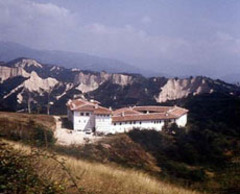 Leaving for Sandanski, accommodation in a hotel. Visit of the Rozhen monastery Nativity of the Virgin. Тhe Rozhen monastery is one of the few medieval monasteries, which has preserved its original appearance, authentic architecture and monumental pictorial art. The monastery was built in 1220. It is to be found 6 km east of Melnik, near the village of Rozhen, located on a high hill with wonderful view to Pirin and Belasitsa, amidst the famous Melnik Pyramids. Dinner and overnight in Sandanski.
Leaving for Sandanski, accommodation in a hotel. Visit of the Rozhen monastery Nativity of the Virgin. Тhe Rozhen monastery is one of the few medieval monasteries, which has preserved its original appearance, authentic architecture and monumental pictorial art. The monastery was built in 1220. It is to be found 6 km east of Melnik, near the village of Rozhen, located on a high hill with wonderful view to Pirin and Belasitsa, amidst the famous Melnik Pyramids. Dinner and overnight in Sandanski.
Day 7 Sandanski Rila monastery Sofia
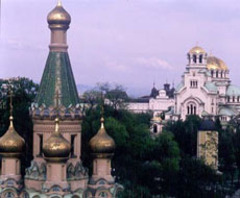 Breakfast. Leaving for Sofia. On the way visit of Rila monastery - the biggest monastery in Bulgaria, one of the most remarkable monuments on the Balkan Peninsula. It is situated at an altitude of 1100 m in the northwestern part of Rila mountains, 120 km south of Sofia. Since 1983 it is included in the list of monuments of the world culture and natural heritage compiled at UNESCO. Arriving in Sofia. Visit of the National History museum. Dinner and overnight in Sofia.
Breakfast. Leaving for Sofia. On the way visit of Rila monastery - the biggest monastery in Bulgaria, one of the most remarkable monuments on the Balkan Peninsula. It is situated at an altitude of 1100 m in the northwestern part of Rila mountains, 120 km south of Sofia. Since 1983 it is included in the list of monuments of the world culture and natural heritage compiled at UNESCO. Arriving in Sofia. Visit of the National History museum. Dinner and overnight in Sofia.
Day 8
Transfer from the hotel to Sofia Airport. Departure.
 Membru al:
Membru al:

















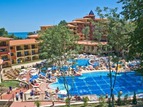
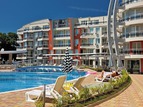


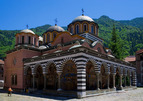
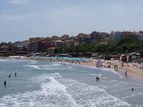

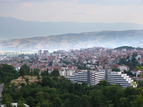


 Touroperator
Touroperator
